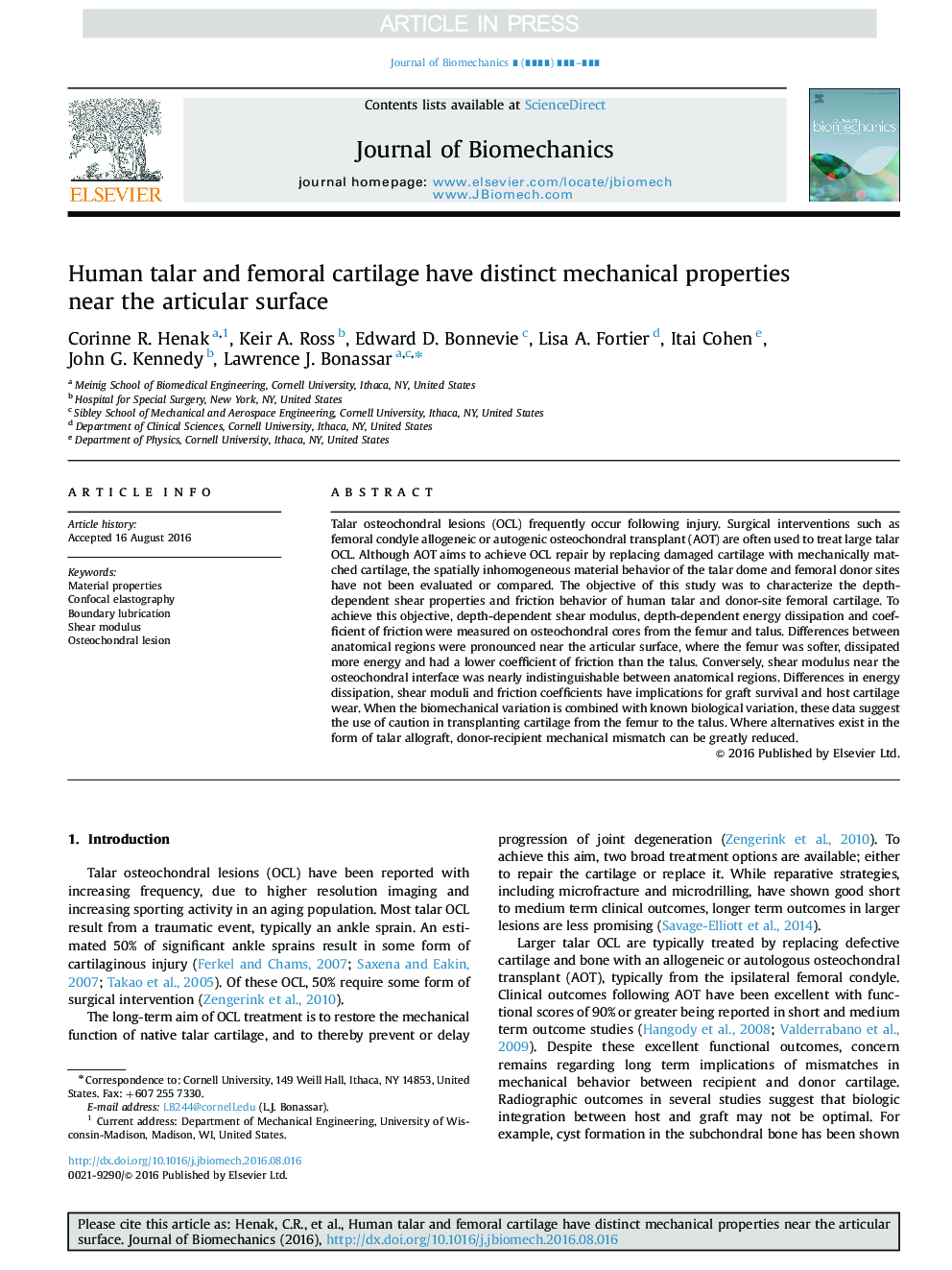| Article ID | Journal | Published Year | Pages | File Type |
|---|---|---|---|---|
| 5032537 | Journal of Biomechanics | 2016 | 8 Pages |
Abstract
Talar osteochondral lesions (OCL) frequently occur following injury. Surgical interventions such as femoral condyle allogeneic or autogenic osteochondral transplant (AOT) are often used to treat large talar OCL. Although AOT aims to achieve OCL repair by replacing damaged cartilage with mechanically matched cartilage, the spatially inhomogeneous material behavior of the talar dome and femoral donor sites have not been evaluated or compared. The objective of this study was to characterize the depth-dependent shear properties and friction behavior of human talar and donor-site femoral cartilage. To achieve this objective, depth-dependent shear modulus, depth-dependent energy dissipation and coefficient of friction were measured on osteochondral cores from the femur and talus. Differences between anatomical regions were pronounced near the articular surface, where the femur was softer, dissipated more energy and had a lower coefficient of friction than the talus. Conversely, shear modulus near the osteochondral interface was nearly indistinguishable between anatomical regions. Differences in energy dissipation, shear moduli and friction coefficients have implications for graft survival and host cartilage wear. When the biomechanical variation is combined with known biological variation, these data suggest the use of caution in transplanting cartilage from the femur to the talus. Where alternatives exist in the form of talar allograft, donor-recipient mechanical mismatch can be greatly reduced.
Related Topics
Physical Sciences and Engineering
Engineering
Biomedical Engineering
Authors
Corinne R. Henak, Keir A. Ross, Edward D. Bonnevie, Lisa A. Fortier, Itai Cohen, John G. Kennedy, Lawrence J. Bonassar,
